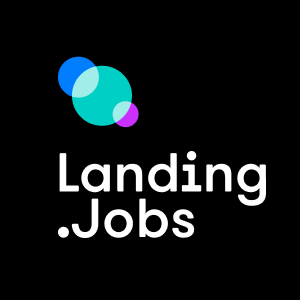With the acceleration of remote work and the digitalisation of hiring, tech teams face a growing risk of fraud in recruitment: candidates who either don’t exist or aren’t who they claim to be. The rise of generative AI, deepfakes, voice morphing, and automation platforms has made it easier than ever to fabricate profiles, manipulate portfolios, and simulate interviews.
The impact goes beyond reputational damage. A single fraudulent or poor technical hire can have significant impact on costs, not to mention the operational delays, compromised codebases, and rework costs it can generate.
Numerous reports in the tech industry highlight a clear increase in fraudulent candidates, particularly for fully remote roles, where physical presence isn’t required and identity masking is easier to pull off. Companies need robust methods to distinguish real talent from high-quality scams.
Common types of fraud in recruitment beyond the CV
Recruitment fraud has evolved far beyond embellished CVs. It now shows up with technical polish and credibility. Common forms include:
- Fake certifications and diplomas, sometimes AI-generated;
- Portfolios created or enhanced using generative tools, with little original content;
- Technical interviews or assessments outsourced to third parties. The so-called “ghost candidates”;
- Deepfake videos or voice-altered responses in these interview stages;
- Discrepancies on social networks, like LinkedIn, with inconsistent information between CVs and online profiles.
These tactics often surface in high-demand roles with rushed screening processes or where companies rely heavily on automated filters. Nowadays, manual review is not enough given the increasing quality of deception and methods used for these scams.
How to detect red flags early in the process
The good news is that many fraud signals can be detected early, if you’re prepared and know where to look. Key indicators include:
Timeline inconsistencies: Unexplained employment gaps, overlapping job dates, or vague start and end periods.
Social network validation: Use technology-enabled social graph analysis to verify candidates’ professional presence and spot anomalies in career histories.
LinkedIn profile red flags:
- Large follower counts but few first-degree connections within relevant tech companies or ecosystems.
- Excessive use of technical jargon without clear evidence of contextual application in past projects.
Professional network analysis:
- Assess the quantity and quality of meaningful connections within relevant industry circles.
- Review interaction history and overall profile consistency to distinguish genuine candidates from fabricated ones.
Combined approach: Pair tech-driven filtering with expert human review to create a stronger first line of defence during initial screening.
Building a trustworthy hiring process: integrating identity verification, skills assessment, and culture
Preventing recruitment fraud requires a combination of robust verification methods and a strong internal culture.
Companies should integrate identity verification with comprehensive skills assessments to ensure candidate authenticity. For example, asking candidates to submit short videos explaining their motivation can reveal fake profiles, since AI avatars often struggle with natural gestures, eye movements, and spontaneous responses. Even in remote-first environments, face-to-face or live interviews remain the most reliable way to confirm identity, particularly for sensitive roles.
Use agencies or engineering teams to design and administer technical tests that help prevent “ghost candidates” from submitting work done by others. It also improves the quality of assessments and enables peer-to-peer interaction that can expose inconsistencies. While AI-based analysis of recorded interviews offers promise, it should always be applied cautiously and in parallel with manual review.
Complementing these steps, structured background checks to verify certifications and references remain essential for confirming candidate information.
Fraud prevention must be culturally embedded. Examples include:
- Establishing a clear and communicated “zero tolerance” policy for false statements, supported by transparent validation processes
- Or developing an internal hiring manifesto that describes the company’s commitment to quality and fairness and sharing it as part of the candidate experience.
Platforms like landing.jobs play a crucial role in supporting these efforts by providing reliable vetting frameworks and technical assessments. This support helps companies streamline hiring processes while maintaining high standards of authenticity and quality of candidates.
From risk management to strategic advantage
Fraud detection is important for damage control and enabling confident and sustainable growth. A recruitment process that consistently identifies real, capable talent becomes a business asset: an asset that strengthens team performance, lowers delivery risk and accelerates onboarding.
In roles with access to sensitive systems and data, fraudulent hires can also introduce cybersecurity vulnerabilities. Robust hiring practices are a key component of organisational security. Organisations that integrate anti-fraud measures into their hiring operations increase their operational resilience, reduce cybersecurity exposure, improve productivity per hire and create stronger, more authentic company cultures.
In an uncertain and competitive market, efficient and fraud-proof hiring is a strategic advantage.






0 Comments